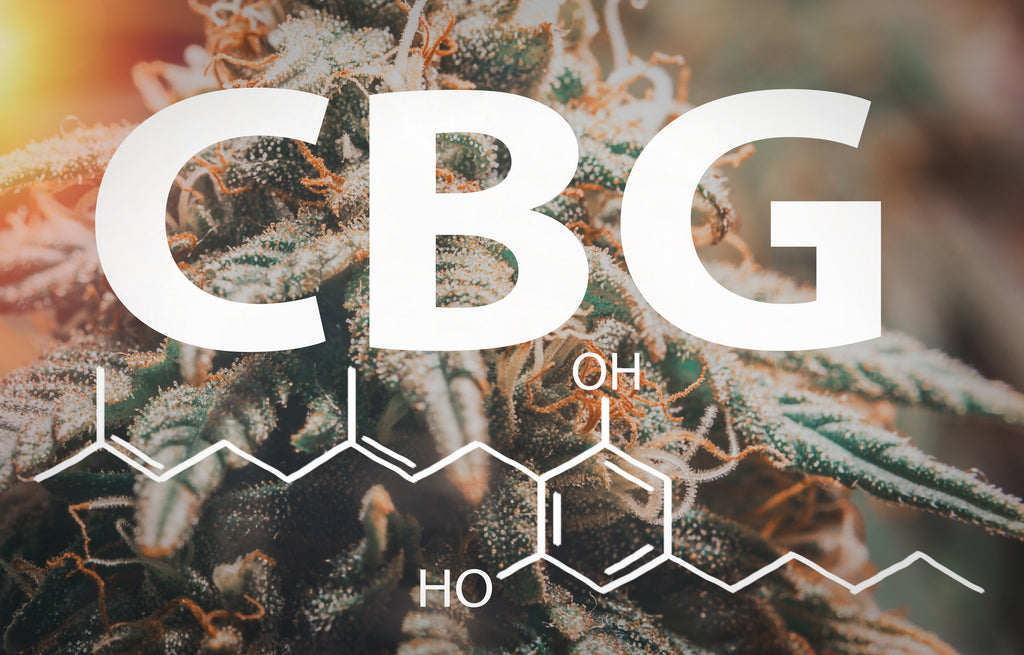You must be familiar with CBD due to its growing momentum in the beauty and wellness sector, but have you heard of CBG?
CBG or cannabigerol, a non-psychoactive cannabinoid, is a natural precursor to all other cannabinoids. CBG is a minor cannabinoid, mainly because it occurs in low concentration in a harvested cannabis plant. Despite its naturally-low concentrations, it is an incredible medicinal cannabinoid used to treat many health conditions.
Even though CBD and THC have commanded the most public attention amongst the cannabinoids over the years, CBG is now gaining traction as more and more people are becoming aware of its medicinal benefits.
CBG: What is it?
CBG is short for Cannabigerol and is known as “the mother of all cannabinoids” as it is the building block of the popular cannabis compounds such as CBD & THC. CBG starts out as CBG-A, an acidic form of CBG, which occurs naturally in hemp and cannabis plants. When exposed to heat (the sun, for example) CBG-A morphs into other variants of cannabinoids like CBD, THC, CBG, and CBC.
Researchers Yehiel Gaoni and Raphael Mechoulam isolated CBG for the first time in 1964, however, it took years to realize its true potential. Just like CBD, it has remarkable potential for treating both physical & psychological conditions. CBG hasn’t historically been as popular as CBD & THC cannabinoids, mainly because of its scarcity in the plant itself. Modern extraction technology allows for these trace amounts to be extracted and infused in gummies, capsules, and distillates– the vessels of today’s CBG products.
CBG is a terpene phenolic compound that can be divided into 3 different parts, carrying different chemical and pharmaceutical properties. CBG, like its counterpart, CBD, has garnered the attention of many health professionals & cannabinoid consumers through its profound healing powers.
How is CBG Made?
CBG is naturally found in a very small amount (usually less than 1%) of a harvested cannabis plant which makes it quite difficult to produce. Because CBG is a “building block” of other cannabinoids, CBG can be found in higher concentrations in young cannabis plants. As a result, cultivators can choose to harvest their cannabis plants early to extract higher amounts of CBG isolate.
The cannabis plant produces CBG-A or cannabigerol acid, the precursor to the main three cannabinoid lines: tetrahydrocannabinolic acid (THCA), cannabidiolic acid (CBDA), and cannabichromenic acid (CBCA). The enzymes present within the cannabis plant break down the CBGA towards the three cannabinoid lines. Adding in factors such as heat and light, CBGA morphs into the cannabinoids we know: THC and CBD.
To put it simply, all cannabinoids such as CBD, THC, CBC start as CBGA, an acidic form of CBG, and as the plant matures the CBGA converts into other cannabinoids. The scarcity of CBG strains and the associated cost of production makes it the “Cadillac of Cannabinoids.”
What is CBG used for?
Being the “mother” cannabinoid, CBG has unique medicinal properties that help in treating many chronic health issues. Although CBG is still being studied, research has discovered a lot of its therapeutic potential in improving human health.
- Anti-microbial effects: Discovered while testing CBG against the strains of Staphylococcus aureus bacterium (Staph), researchers found the anti-microbial properties in CBG to be effective in fighting infection.
- Anti-inflammatory effects: According to a 2013 study, scientists successfully treated inflammatory bowel disease in mice with the anti-inflammatory properties of CBG cannabinoid. After clinical trials on humans, it was discovered that CBG can be used for treating many inflammatory conditions.
- Neuroprotective effects: CBG also possesses neuroprotective properties. It has been found that CBG acts as an antioxidant & helps in protecting nervous system damage.
- Appetite stimulant: Apart from neuroprotective effects, CBG is also considered to be a great appetite stimulant compound. This makes CBG a promising solution for people struggling with eating disorders, cancer treatments, and other appetite-suppressing conditions.
Medicinal Benefits of CBG
Being a non-intoxicating cannabinoid, Cannabigerol or CBG is known for its health benefits. Due to its widespread popularity in the wellness sector, it has become a major ingredient in health-related products.
Despite the limited studies, CBG has so-far shown profound results in improving human health. With that being said, let’s look at some of the most promising medicinal benefits of CBG:
- Fights Cancer Cells – In a study conducted in the year 2014, researchers found that CBG is extremely effective in fighting cancer cells. They found that CBG helped in blocking receptors that inhibit the growth of cancer cells.
- Treats Glaucoma – In a study published in the year 2008, researchers found that CBG acts as a great component for treating Glaucoma. It is believed to be effective due to its ability to reduce intraocular pressure in the eyes.
- Treats Huntington’s Disease – Huntington disease is a neurodegenerative condition that causes a breakdown of nerve cells in the body. Researchers have found that CBG possesses neuroprotective properties that help in protecting the nerve cells in the brain from getting damaged. Additionally, it also helps in improving motor deficits and general brain health.
- Strengthens Bone – A study conducted in 2007 suggests that CBG can increase bone formation. It also helps in assisting the healing of fractured bones and helps protect against osteoporosis.
- Soothes IBD (Inflammatory Bowel Disease) – Researchers have noted that CBG could be beneficial for treating inflammatory bowel disease as it is rich in inflammatory properties that can help people cope with IBD.
So, these are some of the many known benefits of Cannabigerol. Even with limited research, there is growing evidence that CBG can treat many physical and psychological conditions in humans.



